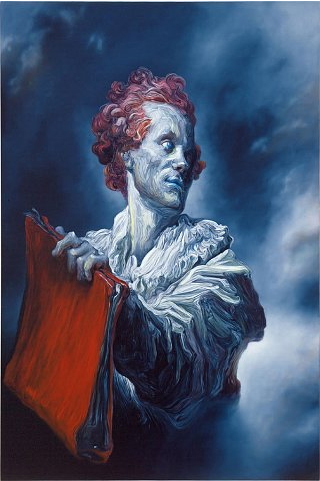ALL YOUNG artists know that to make their mark they have to be different. They have to break with tradition, challenge the stale conventions of the past, redraw the parameters of possibility. The trouble is that, although the message once sounded invigorating, a century and more of avant-gardism has given it the dead ring of cliche. Other ways of being an artist have to be found.
Two exhibitions in London at the moment, ''Young British Artists II'' at the Saatchi Gallery, and ''The Barclays Young Artists Award'' at the Serpentine Gallery, demonstrate how hard it has become for young artists to boldly go where no painter or sculptor or installation or performance artist has gone before. Neither show is likely to be remembered as a milestone in British art, but they do have unintentional significance. Their hidden theme is the predicament of the would-be avant-garde. Call it the crisis of originality: everyone wants to be original, but so many forms have been tried and tested already that genuine newness has become increasingly difficult to conjure. The collective motto of the late 20th century may turn out to be ''It's All Been Done Already''.
The postgraduate students short-listed for the Barclays Young Artist Award attempt to cope with the problem in a number of ways. The most significant solution - although it also makes for the least engaging art - is provided by Glenn Brown, one of only two painters included in the exhibition. In painting, more of everything has been done already than in almost any other medium. Brown deals with this knowledge by putting his own sense of belatedness and despondency to work.
His primary target in this enterprise is Frank Auerbach, who does double duty here as authority figure and sacred cow. Brown repaints Auerbach's...

Radical chic and the schlock of the new
16-02-1993

